

OAS Executive Committee
President- Lee Priest
Ph. (801) 479-5803
Vice Pres- Cliff Peterson
Ph. (801) 782-4378
Secretary- Jim Seargeant
Ph. (801) 479-4050
Treasurer- Doug Say
(801) 731-7324
Vol. 32 Number 5 February 2003 http://physics.weber.edu/oas/oas.html
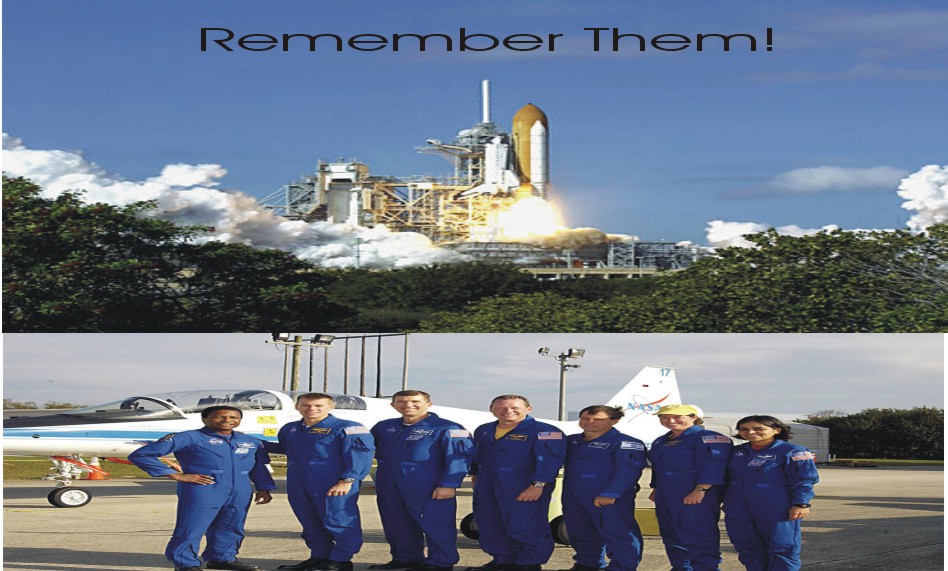
The President’s Message
This month we are in for a great treat; Dr. Brad Carroll will be speaking. The topic will be "What's the Matter in Galaxies?" his talks are always informative and interesting.
The Ott Planetarium welcomes a new director; Dr. Stacy Palen will take over later this spring, she will also handle star party presentations at Antelope Island. We will get to meet her at our March meeting as she has accepted an invitation to speak.
We are still looking for ideas for our astronomy class if you have something you would like included, let Cliff Peterson or me know. I hope we can have something ready in March. The plan so far is a series star parties to help learn the night sky and use telescopes.
Leave your calendars open for September 8, 9, 10, that is when we have the 24-inch Clark Refractor telescope reserved at the Lowell Observatory in Flagstaff Arizona. More information about the observatory can be found at www.lowell.edu/. There is a lot more there than the telescope, this could be a fun and educational trip for the family.
Thanks, Lee Priest President, Ogden Astronomical Society
OAS Minutes
9 January 2003
President Lee Priest opened the meeting at 7:32 and announced the program for the night would be a presentation on astrophotography by Jim Seargeant.
Notes and Announcements
Sites have been reserved for the Dead Horse Point star party. Though no additional sites are available for reservation, several members have room in the ones they have reserved, some sites will be available for first-come-first-served, and camping on BLM land is still an option. If enough members participate, the club may try for a group site next year. The telescopes will be set up to the west of the camping loop.
Several Utah observers will attempt to head south along I-15 to view the re-entry of STS 107 on the morning of 1 Feb.
The Coronado Instruments SolarMax40 telescope should be here next month.
The Utah legislature is considering dark sky legislation sponsored by the Utah Dark Sky association of Park City. There was considerable discussion about informing your representatives of our support for this measure. [Update: OAS members Ron Vanderhule and John Sohl attended the Utah State Senate hearing on the bill. The bill failed in committee 2 to 3.]
Reminder- the OAS has reserved the Lowell Observatory for the nights of 8 - 10 September 03 for the Mars opposition.
The longest serving director of the Ott Planetarium, John Sohl, will step down. John will continue to be involved, but not in the day-to-day activities of the Ott. The new director, Dr. Stacy Palen (see http://physics.weber.edu/palen), will continue to support the star parties and slide shows along with John and Seth Jarvis, the director of the Clark Planetarium.
Construction of the Clark Planetarium is progressing; the Digistar 3 projector will be breathtaking. (See http://www.es.com/products/digital+theater/digistar+3/index.asp)
John will post the OAS 2003 calendar on the website (see masthead) in a way that should be usable by all. He requested feedback on the site - it is now simply built to ensure fast downloads but can be made fancier. Any comments? Feedback solicited.
The fate of the Hanson Planetarium was discussed. It is a city owned building and is on the historic register, but not clear what will happen to it. The LDS church as expressed interest in the building.
John is looking into replacing the Ott’s projector - perhaps with a Digistar 3 SP or a Minolta MediaGlobe.
John noted several calls asking if the good views of Saturn have been missed. “Don’t worry, Saturn will be around for a while.”
There were several compliments on the Astro Workshop. Feedback is invited.
Wayne Sumner is evaluating video cameras for use with telescopes at star parties. The idea is to help those who have trouble looking through an eyepiece He just finished looking at one from Orion, has sent it back, and will try some of those recently tested by Sky & Telescope.
Lee then introduced the Jim Seargeant for the program. Jim first discussed options for receiving the newsletter - see Secretary’s Notes, below.
Upcoming Events
Feb 13, 7:30 PM OAS Meeting - Ott Planetarium
See the OAS calendar for other events - located at the OAS website
Secretary’s Notes
The Secretary discussed the option of sending out the OAS newsletter electronically. Use of PDF should eliminate word processor compatibility issues. Electronic distribution will give members any pictures in color (also available on the web site) and save on copying and mailing costs. The newsletter will be e-mailed only to those who agree to it; all others will continue to receive it by mail. The mailing list will not be distributed via e-mail, but will be mailed out periodically.
I’ll send PDF copies of the newsletter to everyone who has indicated they’d like it that way. If you didn’t get a PDF copy but would like to, let me know at JimSarge@attbi.com.
This newsletter will be mailed to all so that everyone gets a printed color copy of the OAS’s calender for 2003. Thanks to Cliff Peterson for printing them.
Jim Seargeant’s Images
We had some clear skies on 6 Jan and Saturn was an easy target in the early evening. I had already set up my telescope and camera for f/10 imaging, so I was able to take a long series of images. On the 6th, I was able to get 170 images between 8:45 and 9:42, 120 clear filter, 20 red, 20 green, and 10 blue filter. The idea behind so many clear images is to be able to weed out those most affected by atmospheric turbulence, then combine the remaining sharp images to improve the signal-to-noise ratio of the final result.
The exposure times were brief, .2 sec for clear, .4 for red and green and .6 for blue, but on that night, turbulence still blurred about 40% of the images. With so many images to go through, choosing which images to keep and which to toss was a bit subjective. After much eyestrain, I hit upon the technique of registering the images, selecting one of Saturn’s moons, and measuring the full width at half maximum (FWHM) on each image. Mira makes this an efficient process and gave me a listing of all of the images sorted by FWHM, sharpest to least sharp. With this list, it was possible to objectively choose which images were the sharpest - and was much easier on my eyes.
This is the result of an LRGB combine of the best of the clear and filtered images. The newsletter image is in grayscale; the PDF versions and the OAS web site are in color.
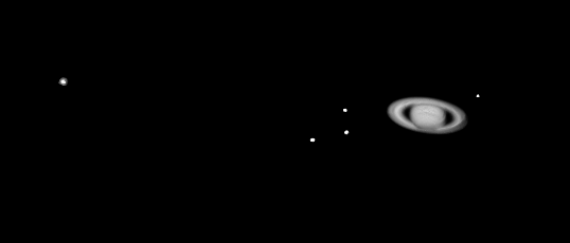
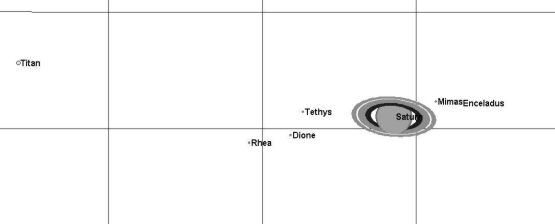
The sharpness is getting there. Registration between the color images isn’t too good - it makes the colors too lurid. Saturn’s not that colorful. The moons came out too bright. To see some really impressive images of Saturn taken at high magnification and by combining many exposures form a video camera, see http://djoye.chez.tiscali.fr/saturn_eng.html.
(The text below and pictures below the Saturn and moons chart are added - ran out of room on the printed newsletter.)
Only Enceladus is visible to the right of Saturn. Mimas was just a bit too dim to make out.
Here is an enlarged image with just a bit too much sharpening, but the contrast in the rings
is more visible, as a bit of banding on the surface of Saturn.
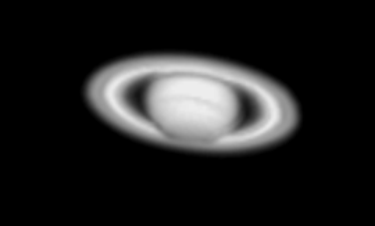
Here is the color image. I just couldn’t get the red, green, and blue images registered properly
and the colors just aren’t right. Titan is just faintly visible, but I’ve lost track of Elgie’s trick of making them more visible Gotta work on it some more.
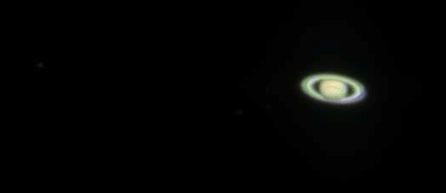
Jim Sgt